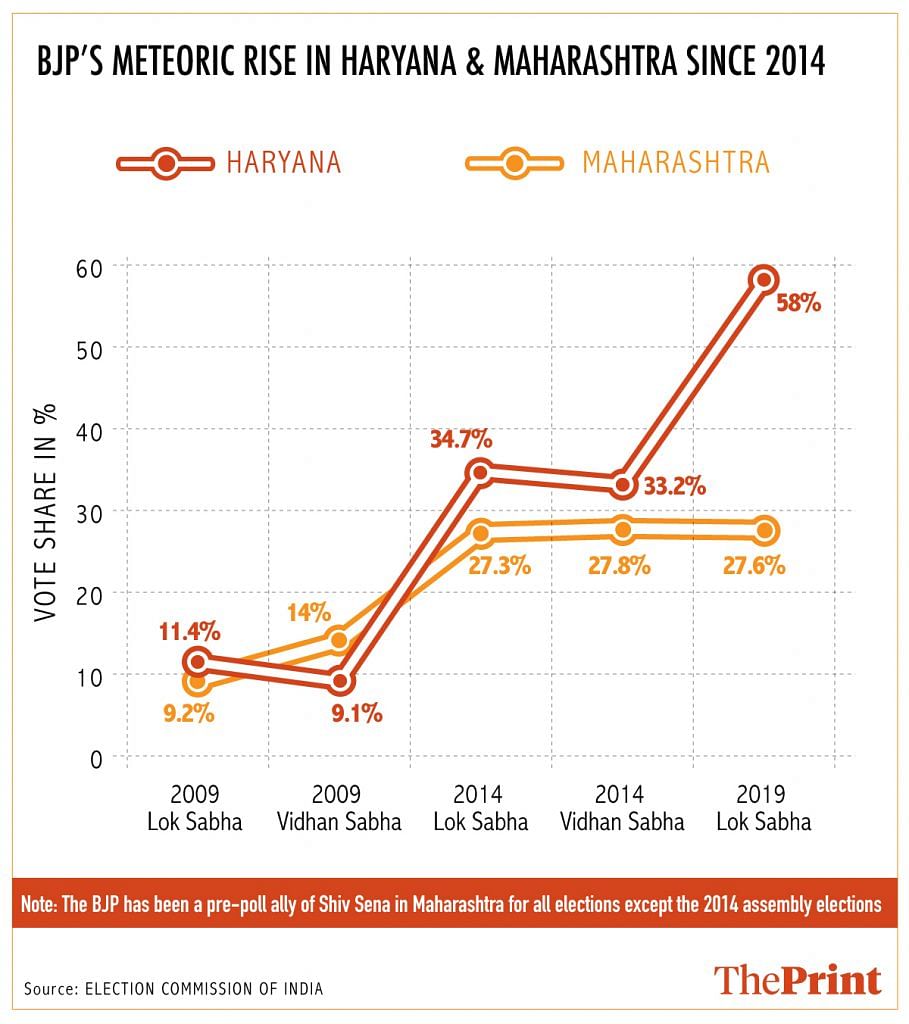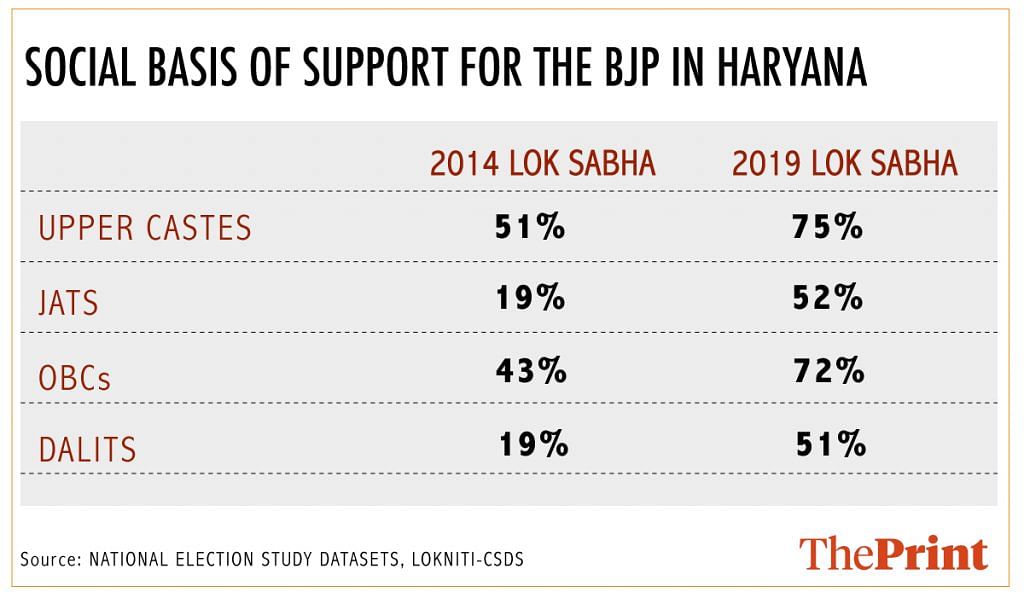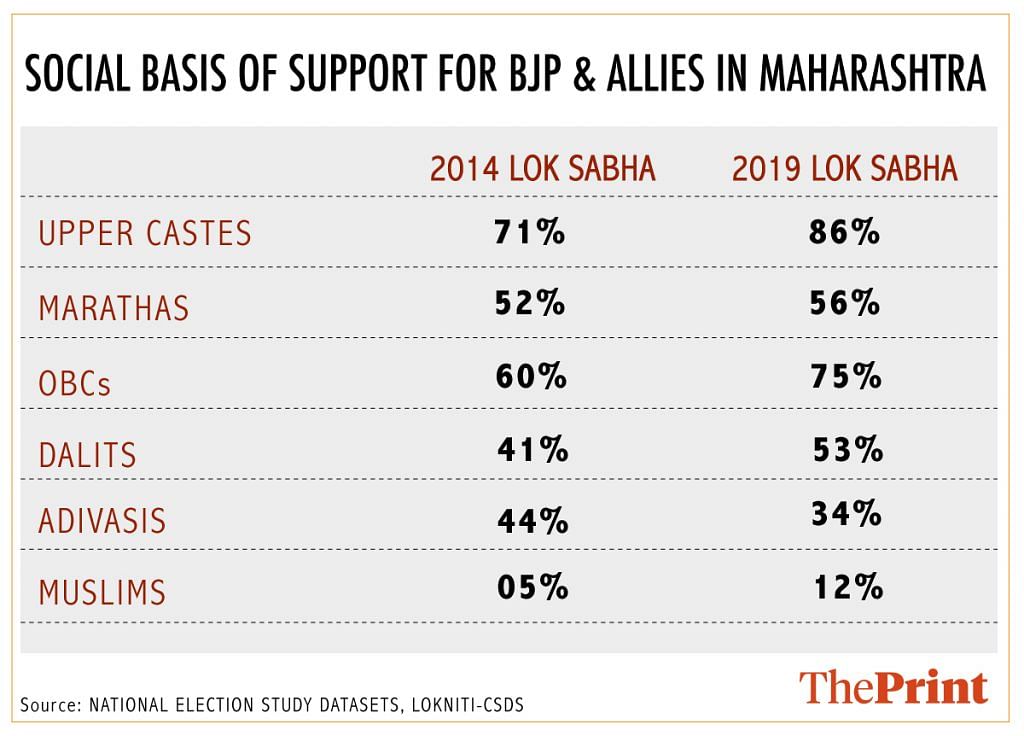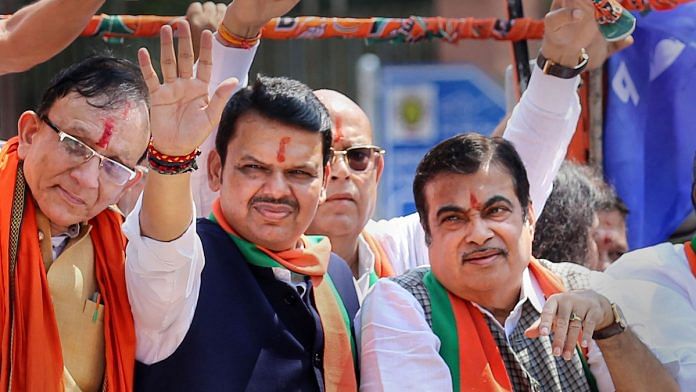It rarely happens in Indian politics. Indian voters, they say, can surprise election analysts even in the most predictable of polls. However, it seems that the bets are off this time as there is a near consensus that the Bharatiya Janata Party – BJP – is likely to emerge as the winner in both Haryana and Maharashtra.
The curiosity about the verdict is limited to the extent of the BJP’s victory and what would remain of the Congress in these states after the polls. The latter is imploding under factional feuds in Haryana, and nearly a quarter of its legislators have joined the BJP or the Shiv Sena in Maharashtra.
BJP’s rise in Haryana & Maharashtra
How did the BJP become a force to reckon with in these two states? The data presented in Figure 1 shows that the party was a marginal player in state politics up until 2014. However, things changed with the 2014 Lok Sabha elections when the BJP emerged in the pole position in both states.

In our view, the BJP adopted a very similar strategy in both states and reaped rich dividends.
First, it started as a junior partner of the already established parties in the state. The BJP remained a permanent junior partner of the Shiv Sena since the early 1990s in Maharashtra. This changed with the BJP’s spectacular performance in the 2014 Lok Sabha elections, and the party demanded a greater share of seats to contest in the assembly elections. The negotiations broke down and the two allies contested the assembly elections separately, which were held a few months after the Lok Sabha polls. The BJP emerged as the largest party then and now the Shiv Sena is contesting as the junior ally of the BJP.
In Haryana, the BJP never had a permanent ally and it contested with various parties at different points in time such as the Haryana Vikas Party (HVP) of Chaudhary Bansi Lal, the Indian National Lok Dal (INLD) of Om Prakash Chautala, and the Haryana Janhit Congress (HJC) of Kuldeep Bishnoi. Buoyant by its performance in the 2014 Lok Sabha elections, the BJP decided to go solo in the assembly elections held a few months later and won a clear majority in the house.
Second, the BJP carefully mobilised a coalition of non-dominant castes in the states. The party’s coalition in Maharashtra largely relied on mobilising the upper castes (primarily Brahmins), non-Maratha backward castes and a section of Dalits and Adivasis. Similarly, the party sensed an opportunity in the Jat vs non-Jat polarisation and rallied non-Jat communities in its first phase of mobilisation in Haryana. In both states, however, it seems that the BJP has managed to break the binaries of dominant and non-dominant caste barrier (See Table 1 and 2). In the 2019 Lok Sabha elections, the party won votes from all communities except religious minorities. Whether the dominant caste voters will remain with the BJP as strong supporters, especially in Haryana, remains to be seen.


Also read: In Haryana Congress manifesto, Rs 10 thali, private sector job quota & old-age pension
Weak opposition, easy votes
Why has it been so easy for the BJP to attract voters from all segments? There is no gain in saying that while Prime Minister Narendra Modi’s popularity along with the government’s ability to deliver welfare benefits (and well, publicise who should get the credit) are among the principal factors in the party’s improving fortunes, a weak and divided opposition has played a crucial role.
The nature and reasons for the weakening of the opposition in both states differ. The main opposition parties in Haryana have witnessed bitter internal revolts in the recent past. The INLD was vertically split between the two sons of Om Prakash Chautala and there is a power struggle between the Bhupinder Singh Hooda and Ashok Tanwar factions of the Haryana Congress. In Maharashtra, the legislators from the Congress and the Nationalist Congress Party (NCP) have been co-opted by the BJP. Many of these legislators jumped ship fearing a crackdown by the Devendra Fadnavis-led government on sugar and agriculture cooperatives, which form the bedrock of political power for many of these legislators.
While a weak opposition in these states are likely to be the foremost reason for the BJP’s victory, it is nonetheless very important for the BJP and Prime Minister Narendra Modi, especially at a time when the economy is showing no signs of recovery. The victory will not only put the BJP firmly into the politics of these states, but will also create favourable conditions for the party in the two upcoming elections of Jharkhand and Delhi, where it is likely to meet a more formidable opposition.
Rahul Verma is a Fellow at the Centre for Policy Research (CPR), Delhi. Pranav Gupta is a PhD student at the University of California, Berkeley. Views are personal.







Abhijeet Iyer mitra- 1st tell which country in this world going to give you technology for making 4th generation aircraft let alone 5th and 6th generation. Listen – no one.
We will have to do everything ourselves.
Naming a few-We will have to make all type of good engines e.g. turbojet, ramjet, pulsejet, turbines, compresssors working in temperature range of 4000+ centigrade, 100000+ rpm requiring topnotch metallurgy, cermat, powder metallurgy fabrication techniques, design, All good types of radars, sensors, jam proof networks and communication with AI imbeded.
List goes on.
So our airchief has put perspective in right order.
We will have to move in this direction only to make our country competitive and self reliant.
The writer seems to be a ngo funded by external agency. Do not have any iota knowledge os airceaft designing or development. Mixing multiple ideas and story line to put a false narrative. I dia needs its own vision and industrial complex. A cou try can stand on its own when some key strategic capabilities can be owned by itself.